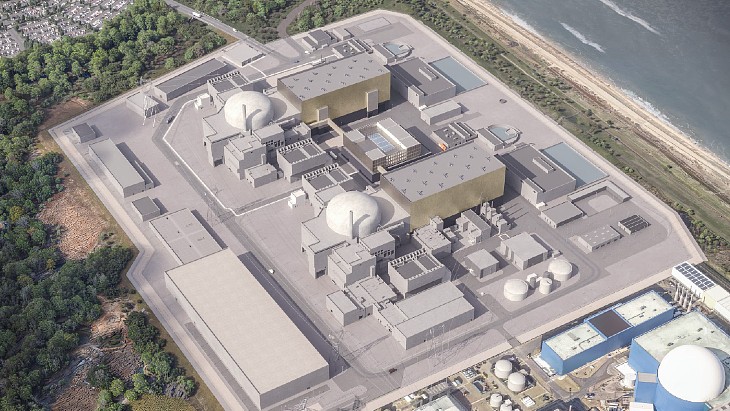Completing existing reprocessing contracts at the Thermal Oxide Reprocessing Plant (Thorp) at Sellafield remains a "viable and cost-effective strategy," the UK's Nuclear Decommissioning Authority (NDA) has concluded.
.jpg) |
| Flasks of used fuel in underwater storage at Thorp (Image: Sellafield Ltd) |
Following its creation in 2004, the NDA inherited a range of contracts covering the reprocessing and storage of used oxide fuels at the Thorp facilities. These include used light water reactor (LWR) fuels from Europe and Japan that are being stored at Sellafield pending reprocessing in Thorp, as well as the used fuel from the UK's fleet of Advanced Gas-cooled Reactors (AGRs).
Thorp had been expected to complete the reprocessing contracts by 2010. However, due to "operational difficulties both in Thorp and in downstream support plants this has not been possible," the NDA said. Thorp was shut down between May 2005 and December 2007 due to an internal leak of highly radioactive liquor from a fractured pipe. The loss of the pipe, which could not be repaired, meant a work-around method had to be developed to maintain the plant's process flow.
In November 2011, the NDA published a paper entitled Credible Options, in which it assessed alternatives for managing its oxide fuels. Three options were investigated: fulfilling the reprocessing contracts in Thorp; reprocessing less than the contracted amount of used fuel; and, reprocessing more than the contracted amount. At that time, the NDA's analysis showed that the amount of used fuel that should be reprocessed in Thorp on purely economic grounds was comparable to the amount that was contracted to be reprocessed.
It said that its strategic position was to complete the reprocessing contracts for foreign fuel and to put the UK's used AGR fuel into interim storage pending a decision on a final disposal repository. However, its stated that this option depended on meeting two conditions: securing an agreed means for the interim storage of the AGR used fuel; and, demonstrating that the reprocessing contracts could be completed without the replacement of existing highly-active liquor storage tanks (HASTs).
The NDA has now completed a strategic review of the options for the management of oxide fuels, under which it considered new information on the performance of its "existing and planned-for assets to support reprocessing," as well as information from EDF Energy - operator of the country's AGR fleet - on its plans to extend the operating lives of its AGR plants. The NDA said that its strategic position had now become its preferred option, saying that its review "confirms the NDA's position that completing the reprocessing contracts at Thorp remains a viable and cost-effective strategy."
The reprocessing contracts are now expected to be completed by 2018, at which time Thorp will be shut down for decommissioning. The NDA noted that "confirmation of the position concerning the future of Thorp" means that there is "no safety, operational and strategic requirement" to replace the existing HASTs. Sellafield Ltd, the NDA reported, has determined that there are "significant margins of safety and contingency with the current fleet of HASTs to complete the remaining reprocessing programs."
However, the NDA warned that there are "a number of performance risks that could impact on the delivery of the strategy." It said that operational difficulties could result in the reprocessing of less used fuel than currently planned by 2018 and it would therefore "continue to examine alternative options so that we can manage these risks to the delivery of our strategy."
The NDA estimates that there remains some 6200 tonnes equivalent uranium (teU) of used AGR fuel for it to manage, based on current projections for the lifetime of the AGR fleet. However, should EDF Energy extend its entire AGR fleet by seven years, an additional 1260 teU of used fuel would be generated. There also remains about 300 teU of overseas-derived LWR fuel to reprocess, as well as some 150 teU of oxide fuels from the country's development of prototype reactors.
Researched and written
by World Nuclear News




_55530.jpg)
_42372.jpg)
_37521_70699.jpg)

_76087_55556.jpg)




